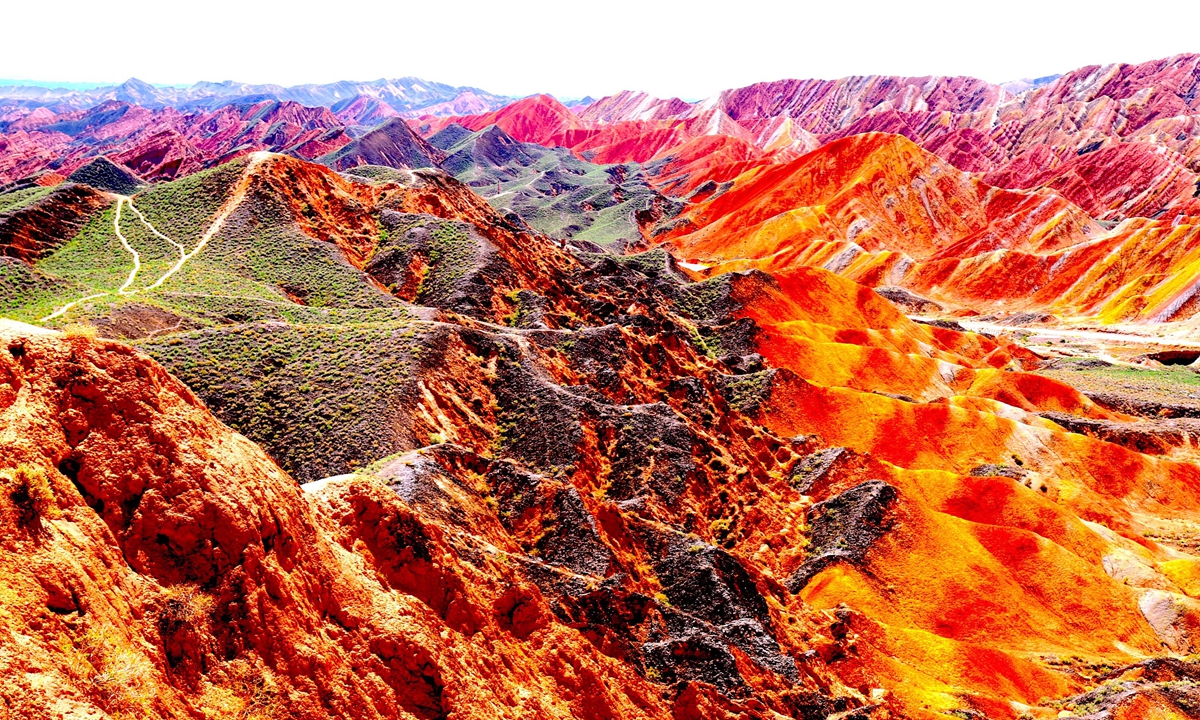Two new additions bring number of UNESCO global geoparks in China to 41
By Ji Yuqiao Source: Global Times Published: 2020/7/9 19:43:40

Zhangye Global Geopark Photo: VCG
Two geoparks in Central China's Hunan Province and Northwest China's Gansu Province were granted the title of UNESCO Global Geopark on Tuesday, increasing the number of such parks in China to 41 - a quarter of the world's total and the highest number of any country.
The applications for the Xiangxi Global Geopark in Hunan Province and Zhangye Global Geopark in Gansu Province were approved at a regular meeting of UNESCO held in Paris on Tuesday, according to a People's Daily report.
"The Zhangye Global Geopark is well-known for its danxia landforms," Xie Gaodi, deputy director of the Center for Resource Science, Institute of Geographic Sciences and Natural Resources at the Chinese Academy of Sciences, told the Global Times on Thursday. Danxia landforms are a unique type of red sandstone landscapes found in China that take form as a range of erosional landforms such as cliffs and natural pillars.
"The dry and windy weather conditions contribute to the formation of the unique landscape in this region."
The geopark, about 1,289 square kilometers in size, is also the only region in China with both danxia landforms and colorful hilly landscapes. Over the eons, natural forces such as the wind and rain have carved the landscape into several "palaces" that sit on hills.
According to an introduction on the geopark's official website, the Heihe River, the second largest inland river in China, traverses the park, while the geology of Qilian Mountain records the tectonic uplift that lead to the creation of the Qinghai-Tibet Plateau over a period of 65 million years.
The Xiangxi Global Geopark is located in the Tujia-Miao Autonomous Prefecture in Hunan Province. It boasts special landscapes that include red stone forests and a number of enormous waterfalls.
This geopark does not only possess beautiful natural landscapes but also is home to 160 Paleolithic and Neolithic cultural sites that provide a window into the origins of human civilization.
Chinese netizens took to China's Twitter-like Sina Weibo to congratulate the two geoparks and express their amazement over photos of these unique landscapes.
"Both of them are magnificent! They can reflect our country's long history and vast territory," netizen iBingo commented.
Many netizens expressed an interest in visiting the parks.
"I toured Zhangye in 2017. Next time I will go to Xiangxi to admire the red stone forests," netizen Lianggexiansheng wrote.
"I care even more about our country's cultural relics after reading these posts and looking at photos of these two geoparks. I am stunned by China's natural history. I definitely have to visit the geoparks around China after the COVID-19 pandemic ends," Wan, a 26-year-old resident of Urumqi in Northwest China's Xinjiang Uygur Autonomous Region, told the Global Times.
Besides the Zhangye and Xiangxi geoparks, Wan said that she first plans to visit the Keketuohai Global Geopark, which is 580 kilometers away from Urumqi.
There are rich geological relic resources at the Keketuohai geopark. The granite landforms at the source of the Irtysh River are unique, and a majority of the mountains are pyramidal in shape with exposed bedrock and extremely high cliffs, the official website of the geopark introduced.
RELATED ARTICLES:
Posted in: SOCIETY